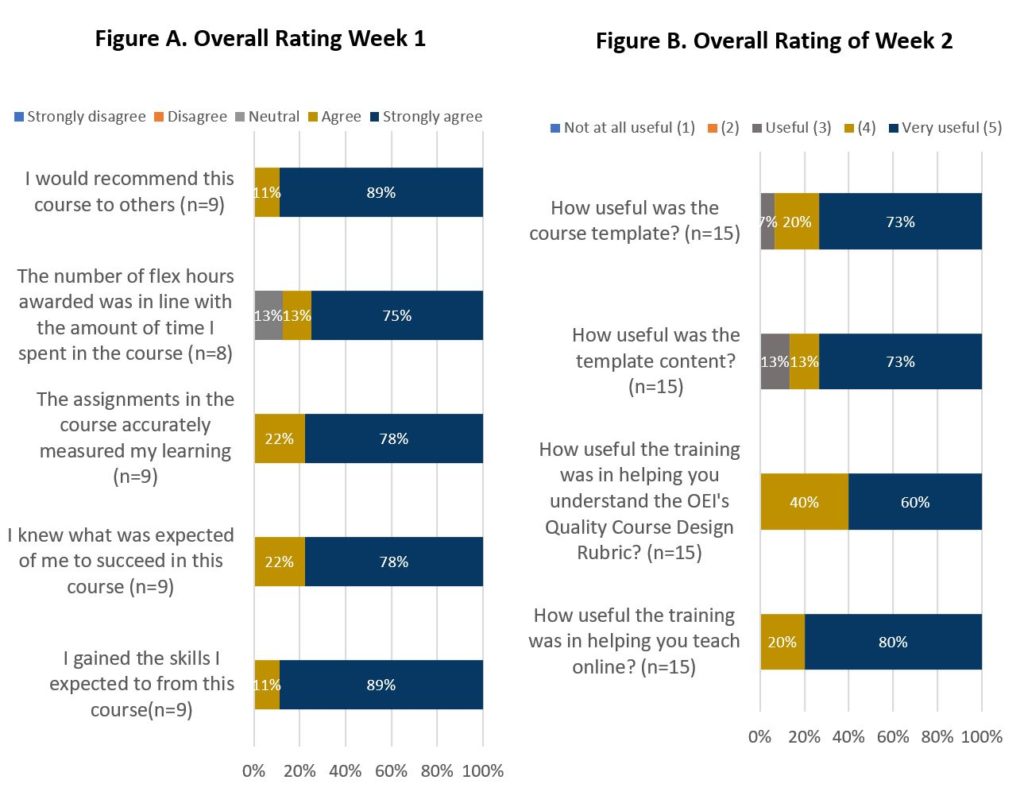
In the era of COVID-19, college faculty have had to make the difficult but necessary transition from face-to-face to online instruction. For those who never have taught online, learning new technology and processes can been overwhelming. As an initial step in transitioning faculty to online instruction, Hartnell College developed a two-week Career Technical Education (CTE) online academy to increase awareness about quality course design and use of the OEI’s Online Course Design Rubric. The academy was funded jointly with Improving Online CTE Pathways Grant (titled Ready | Set | Go) and Perkins funds.
About the DE Academy
The first distance education academy was designed and implemented as a joint effort between the Ready | Set | Go Grant Manager, Carol Hobson, the Peer Online Course Review (POCR) Team, Lindsey Bertomen, Tammy Boates, Tina Esparza-Luna, and Nancy Wheat, and the Instructional Technologist, Laura Otero. To increase faculty’s ability to provide high-quality instruction, the academy had three objectives:
To accomplish these objectives, week 1 (DEW1) with Ms. Otero focused on providing an overview of Canvas and its tools. During the first week, faculty were given a module template and were required to create a course shell. Lessons during the first week included assignments, quizzes, video lectures, and discussion creation; and were completed in faculty course shells. Faculty had deadlines, received grades, and completed lessons in the same way a student would.
After completing and passing DEW1, faculty transitioned to DEW2 where they were provided with additional resources designed to guide them toward the alignment of course content to the rubric. Faculty met on day one for a two-hour synchronous Zoom session to introduce the POCR team, explain the process and the support they would have for the week. The session was recorded. There were no assignments provided for DEW2. The deliverables were the orientation and two weekly modules closely aligned to the Course Design Rubric. POCR team members provided a minimum of four scheduled Zoom hours each of the five days for drop-in session. During the week, one POCR team member monitored the discussion, and other POCR members contributed when they had supporting content or additional information. Participant faculty were assigned a POCR team member to officially review their course for completion, and to offer guidance and suggestions along the way.
Who Participated?
Twenty-six CTE Instructors, representing 13 departments, participated in the academy. Of the 26, 19 completed the first week’s requirements and were able to participate in week 2 of the academy.
Two Key Findings

Lessons Learned/ Next Steps
Both faculty who participated in the academy, and the POCR team, recognize the need to adjust the following items for future academies:
For more information about how to set up a distance education academy, or to learn more about Hartnell College’s distance education academy, please contact Carol Hobson.
Author:
Carol Hobson
Distance Education Coordinator
Any opinions, findings, and conclusions or recommendations expressed in this publication are those of the author(s) and do not necessarily reflect the views of the Foothill-De Anza Community College District or those of the California Community College Chancellor's Office.